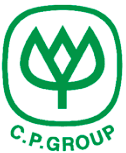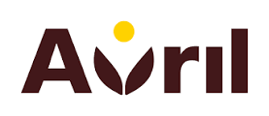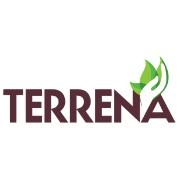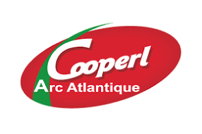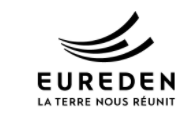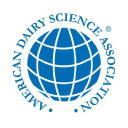Summary
The global farm animal feed market has experienced fluctuations in recent years. While there was marginal growth in 2019, the sector witnessed a decline in 2020, with a further dip in 2022 by 6.7%, indicating shifting trends due to factors such as environmental standards and raw material cost volatility. Despite this, the market's value was $432 billion in 2022 and is projected to grow at a CAGR of 4.2% to 2032. The European market saw a 3.1% decrease in compound feed production in 2022, with significant drops in the pig and poultry sectors.
The French market, being the third-largest in the EU, observed a stagnation in sales at 12.16 billion euros in 2022. Feed production in France, in particular, declined by 7.7% from 2018 to 2022, with Brittany maintaining its role as the sector's hub. Trends indicate an ongoing shift toward alternative feeds, with a notable interest in using insects due to their reduced environmental impact and high nutrient concentration.
French Farm Animal Feed Market: A Comprehensive Demand Trend Analysis
The French farm animal feed market has exhibited notable growth patterns influenced by an array of factors that include dietary trends, livestock population fluctuations, and international competition. With a market built on the pillars of cereal-based feeds, proteins, and food waste, supplemented with various feed additives, the sector has managed to sustain a steady demand.
Demand for animal feed in France is intricately linked to the country's livestock distribution. Predominantly composed of cattle (comprising between 60 and 65 percent), poultry (between 14 and 16 percent), and pigs (approximately between 13 and 15 percent), these categories drive the lion's share of feed consumption. Despite a general decline in livestock numbers by roughly 10 percent from between 35 to 40 million head in 2018 to between 35 to 40 million in 2023, cattle remain the leading consumers of feed, demanding a sizable portion of the sector's output.
Production trends in the French farm animal feed market have faced downward pressure. A gradual decrease of nearly 8 percent from previous production highs indicates that the market is in a state of contraction. This trend is influenced by contemporary shifts such as environmental regulations, changing food habits and sharp inclines in raw material costs.
Within the degradation of production figures, it is the regional disparities that shine a spotlight on the sector's operations. Brittany, with a workforce as large as 2,500 employees and a company count close to 70, has emerged as the industry's powerhouse. Its sheer dominance is complemented by significant activity in both Auvergne-Rhône-Alpes and Pays de la Loire, fostering a competitive landscape for the market.
The profile of distribution reveals a tripartite model wherein feed is either produced on the farm for self-consumption, shipped in bulk due to geographical proximity, or retailed through large distribution channels. As an element vital for sector competitiveness, many companies have invested in their logistics capabilities to ensure prompt and efficient delivery. Amidst these practices, a burgeoning trend is the incorporation of insect-based feeds, a sustainable alternative reducing the dependency on traditional raw materials. These practices tout tremendous environmental benefits and the promise of reduced antibiotic resistance.
Yet, France's farm animal feed market grapples with challenges such as competition. With input prices escalating by 25 percent and grain prices proving volatile, domestic producers are cut-throat against imports — particularly from China — which constitutes more than 80 percent of supplies like lysine.
Market Leaders in the Farm Animal Feed Sector
The farm animal feed market is a dynamic arena where several key players exert significant influence. As detailed in the foregoing analysis, a few companies have emerged as pivotal actors driving innovation and sustainability within the industry. These organizations, with their specialized operations and regional strongholds, not only shape market trends but also contribute to the global food supply chain. Below, we introduce some of the primary market leaders, noting their specialized contributions to the sector.
Metabolic Explorer: Pioneering Amino Acids With its facility based in Amiens, Metabolic Explorer has established itself as a leading European producer of amino acids via fermentation. The company exemplifies French innovation in the sustainable sourcing of feed ingredients and represents a homegrown effort to stave off competition from international imports. Their focus on production efficiency and alternative feed components like amino acids reflects the industry's shift toward environmentally friendly practices and the local industry's battle for competitiveness amid escalating imports, particularly from China.
French Agricultural Cooperatives: Cornerstones of Distribution Large agricultural cooperatives in France play a critical role in the farm animal feed market. These cooperatives, which amalgamate producers under one umbrella, leverage collective action not only to fulfill the direct supply needs of the livestock farmers but also to ensure streamlined management of the supply chain. Their importance can't be overstated—these cooperatives represent an extensive network of the feed distribution system in France, assuring the delivery of high-quality feed and supporting the sustainability of local agricultural practices.
Alltech: Global Feed Giant Though not explicitly mentioned in the previous sections, Alltech is a major player in the global animal feed market, renowned for its contribution to animal nutrition and health. By producing additives and premixes, the company actively participates in improving feed efficiency and animal performance, which is crucial for addressing the dietary needs of livestock worldwide.
FEFAC: The European Feed Federation FEFAC, or the European Feed Manufacturers' Federation, plays a strategic role not as a production entity but as a collective voice that represents the interests of the European feed industry. The organization contributes to shaping policies and advocating for the collective interests of feed manufacturers, overseeing a network that includes France's prominent producers and assuring alignment with European regulations and standards. Each of these entities contributes uniquely to the structure and operation of the farm animal feed market. Metabolic Explorer champions innovation with amino acids, cooperatives centralize distribution, Alltech leads in global nutrition solutions, and FEFAC underpins regulatory cohesiveness and industry advocacy
to understand this market
Detailed content
 Inforamtion
Inforamtion
- Number of pages : 30 pages
- Format : Digital and PDF versions
- Last update : 08/04/2024
 Summary and extracts
Summary and extracts
1 Market summary
1.1 Definition and scope of the study
The farm animal feed market encompasses the production and distribution of feeds specially designed to meet the nutritional needs of farm animals such as cattle, pigs, poultry and sheep. This sector involves a wide range of activities, from agricultural production to livestock breeding and the agri-food industry.
The sector's products are based on the use of two main types of raw material:
-compound feeds (mixtures of raw materials)
-additives (incorporations that improve foodstuffs)
The global market is expected to grow at an average annual rate of4.2% between 2023 and 2032. This growth is due in particular to increased demand foranimalfeed . What's more, the supply of products is constantly innovating, a dynamic that leads toa relentless increase in demand.
Despite stabilization in 2021 and 2022, the French livestock feed market experienced sustained growth between 2015 and 2022 , and represents a significant share of the European market. The development of this market is driven in particular by a growing concern for the dietary health of animals and increased attention to the benefits of additives in feed.
The feeds most consumed by farm animals in France are proteins such as soya and cereals such as corn, wheat and barley, although there is also a growing demand for additives. and barley, although a significant proportion of their diet is also made up of food waste, i.e. unsold human food.
In recent years, the French farm animal feed market has been characterized by a general increase in costs. This phenomenon, which has particularly affected the corn and soybean segment, represents a major threat to market operators, as it can jeopardize the entire supply chain of what is a key sector for the Italian economy.
The public is also increasingly concerned about the resource availability problems posed by the feeding of training animals, as it is claimed that this type of animal consumes an excessive amount of primary resources and land that is consequently withdrawn from human availability.
1.2 Global market size
The livestock feed market will be worth $*** billion by **** (***), and is expected to grow at a CAGR of *. *% to ****. This growth is driven by increasing demand for animal feed worldwide. While the emergence of new trends such as vegetarian and vegan diets or a focus on animal welfare, including farm animals, ...
1.3 The European market
Source: ****
According to FEFAC members, compound feed production in the EU reached ***.* million tonnes in ****, down -*.*% on ****. This decline affected all feed sectors, with a notable-*. *% drop in the pig sector and -*.*% in the poultry sector. This downward trend is largely attributed to the prevalence of animal diseases such ...
1.4 The domestic market
Sales in the French farm animal feed market have grown significantly in recent years. In ****, sales amounted to *.** billion euros, and have steadily risen to reach **.** billion euros in ****, representing an average annual growth rate of *.**% over this period.
This upward trend testifies to a positive dynamic in the French livestock ...
1.5 Trade balance analysis
Between **** and ****, imports rose significantly, from *,*** million euros to *,*** million euros, an increase of **% in * years.
At the same time, exports also increased over the same period, rising from *,*** million euros in **** to *,*** million euros in ****, an increase of **% in * years. This increase indicates the growing competitiveness of French products on ...
1.6 Market specifics
Dependence on raw materials: The farm animal feed market in France is sensitive to variations in the prices of agricultural raw materials such as corn and soy, which influence production costs and sales prices. Fluctuations in the prices of these raw materials can have a significant impact on the profitability of ...
2 Demand analysis
2.1 Analysis of demand through breeding operations in France
The breakdown of French livestock into livestock units highlights the predominance of cattle, poultry and pigs. These three categories account for **% of French livestock, with cattle in the lead(***).
Breakdown of French livestock in livestock units* France France, ****, in percent Source: INSEE *UGB: Unité Gros Bétail (***) based on feed consumption. one ...
2.2 Analysis of demand through consumption of meat and dairy products
Individual consumption of meat and eggs is directly correlated with demand for farm animal feed . In France from **** to ****, it is fairly constant, with minor variations from one year to the next. Overall demand therefore depends on the evolution of the French population. Individual meat consumption e
Analysis of dietary trends ...
2.3 International challenge
The French farm animal feed industry is facing an increase in the use of ingredients imported from China, particularly for poultry and pigs. France's Metabolic Explorer, Europe's leading producer of amino acids by fermentation, is directly affected by this competition, as its Amiens plant is under-utilized following a reduction in orders ...
3 Market structure
3.1 Farm animal feed value chain
The main raw materials are
Cereals are the mainstay of animal feed, accounting for **% of total dry matter consumption by livestock[***]. The most widely used are: rice, wheat, barley, maize, sorghum, rye and oats Proteins, mainly soybean Food waste
Additives are then added to complete the food. Additives are substances, micro-organisms ...
3.2 Production characteristics
French feed production from **** to **** shows an overall downward trend, with a total drop of around *. *% over this five-year period. After a marginal increase of *.*% in **** compared to the initial year ****, the sector experienced a slight regression in ****. Although there was a small rise in ****, the significant drop of *.*% in **** suggests ...
3.3 Distribution
As far as distribution is concerned, there are three possible scenarios:
The feed producer may be the same farmer, who then has a factory close to the farm. Feed is produced and shipped to farms in large quantities, often by land, as the distance between producer and farm is generally small. A ...
4 Offer analysis
4.1 Type of offer
European legislation defines and identifies different types of feed on the basis of multiple aspects linked in particular to the satisfaction of energy and nutritional requirements, certain desired functionalities and the specific nature of the ingredients used in the recipe or production process. and nutritional requirements, certain desired functionalities, and the ...
4.2 Production prices
Farm feed production price index France, ****-****, price index base *** in **** Source : INSEE The year **** has seen notable inflation in production costs, influenced byescalating prices for keyraw materials such as wheat and corn. We see an average increase of **% in animal feed prices in ****, following an already notable rise of **.*% in ...
4.3 New trends
Among the trends that will characterize animal feed production in the future, the most interesting is linked to the use of insects.numerous studies have shown that their introduction into animal feed not only has no negative effects on animal growth and production performance, but could alsopromote animal welfare while reducing ...
5 Regulations
5.1 Regulations
The animal feed industry is governed by a series of regulations covering production site hygiene, marketing and product labeling. Market players must comply with these rules, which are checked by local authorities such as the Directions Départementales de la Protection des Populations (***), depending on the département.
Additives in animal ...
6 Positioning the players
6.1 Segmentation
- CP Group
- 新希望集团 New Hope Group
- Cargill France
- Avril Groupe
- Terrena (Coopérative)
- Cooperl Arc Atlantique
- Eureden Group - d’Aucy
- LDC Groupe
- Tromelin Nutrition
- Adisseo
- Olmix
- Neovia
- Serval
- Synthèse Elevage
- Duynie Feed Group (Royal Cosun Cooperativ)
- Metabolic Explorer
- Metex Nutrition Animale
- Triskalia (Coopérative)
- NextAlim
 List of charts
List of charts
- Farm feed market size forecasts
- Sales of feed for farm animals
- Import-export of animal feed
- Breakdown of farm feed imports by value
- Breakdown of farm animal feed exports by value
All our studies are available online in PDF format
Take a look at an example of our research on another market!
Latest news
Companies quoted in this study
This study contains a complete overview of the companies in the market, with the latest figures and news for each company. :
 Choosing this study means :
Choosing this study means :
Access to more than 35 hours of work
Our studies are the result of over 35 hours of research and analysis. Using our studies allows you to devote more time and added value to your projects.
Benefit from 6 years' experience and over 1,500 industry reports already produced
Our expertise enables us to produce comprehensive studies in all sectors, including niche and emerging markets.
Our know-how and methodology enable us to produce reports that offer unique value for money.
Access to several thousand articles and paid-for data
Businesscoot has access to all the paid economic press as well as exclusive databases to carry out its market research (over 30,000 articles and private sources).
To enhance our research, our analysts also use web indicators (semrush, trends, etc.) to identify market trends and company strategies. (Consult our paying sources)
Guaranteed support after your purchase
A team dedicated to after-sales service, to guarantee you a high level of satisfaction. +44 238 097 0676
A digital format designed for our users
Not only do you have access to a PDF, but also to a digital version designed for our customers. This version gives you access to sources, data in Excel format and graphics. The content of the study can therefore be easily retrieved and adapted for your specific needs.
 Our offers :
Our offers :
The Farm Animal Feed Market | France
- What are the figures on the size and growth of the market?
- What is driving the growth of the market and its evolution?
- What is the positioning of companies in the value chain?
- Data from several dozen databases
Pack 5 études (-15%) France
- 5 études au prix de 75,6€HT par étude à choisir parmi nos 800 titres sur le catalogue France pendant 12 mois
- Conservez -15% sur les études supplémentaires achetées
- Choisissez le remboursement des crédits non consommés au terme des 12 mois (durée du pack)
Consultez les conditions du pack et de remboursement des crédits non consommés.





 Animal nutrition: job cuts at Neovia and Sermix - 21/03/2024
Animal nutrition: job cuts at Neovia and Sermix - 21/03/2024
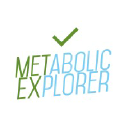 Metabolic in safeguard proceedings, its two plants in receivership - 13/03/2024
Metabolic in safeguard proceedings, its two plants in receivership - 13/03/2024
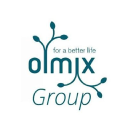 Green chemistry specialist Olmix strengthens its Plant Care division - 23/02/2024
Green chemistry specialist Olmix strengthens its Plant Care division - 23/02/2024
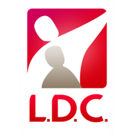 Loué poultry conquers the Polish market - 23/11/2023
Loué poultry conquers the Polish market - 23/11/2023
